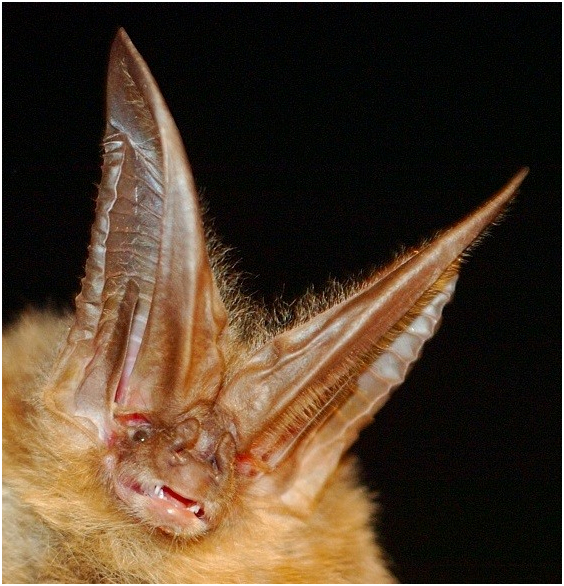Luis Víquez-R1, Rodrigo A.Medellín1, Bernal Rodríguez-Herrera2, Merlin Tuttle3
Recently,the science magazine ”New Scientist” printed a piece by scientific journalist Carrie Arnold entitled: “Contagion” and exposed, in part, the relationship between bats and some viruses cataloged as Emerging Infectious Diseases (EIDs) (Here you can find the full piece: http://www.newscientist.com/article/mg22129550.700-reservoir-bats-spreading-contagion-on-nights-wings.html?full=true#.UwgX3vl5OSo).The article, although informative, was full of half-truths and appealed to sensationalism as a way of conveying the ill-founded message: ”Stay away from bats”.Nobody can deny that bats do harbor a large number of viruses but this is due in part to their biology. Bats have a long evolutionary history, with fossils dating as far back as 52.5 million years. These so-called “new viruses” are really not new at all. The fact is that bats have coevolved with them for a long period of time (many millions of years before humans existed as a species) andthe only new aspect here is us finally discovering them and assigning them a scientific name. This relationship between pathogens and bats is so strong that many researchers are actually tracing back the diversification rates (the rate on which new genetic and possibly morphological variants generate) of both groups and the expected result is that clades will actually match. Misinterpretation of these results may lead to arguments such as the one found in the currant story: ”The diversity and the high prevalence of coronaviruses in bats create more chances for these viruses to spill over into humans”. This type of statement is completely unfounded because most coronaviruses (and many other supposed pathogens) are actually evolutionarily tailored to each species, and this actually reduces the risk of interspecies jumps, rather than increasing it. Spill-over cannot be treated as a given fact for EIDs. There are too many steps in between the finding of a new viral variant and the “hoards of deadly diseases lurking inbats” as proposed by the author, and the limited evidence available, from the thousands of recently described viruses, clearly dismisses the potential for interspecific transmission except in a handful of cases.
Search and you will find
Arguments about bats harboring more viruses than any other mammalian group have been made but an analysis made by Olival and colleagues in 2012 proved that bats only host 4.5% of all know zoonotic EIDs; rodents, ungulates, primates and even horses hosted more human EIDs than bats. The large number of publications relating bats with EIDs can be tracked back to the fact that researchers have started to look for viruses in bats more often and more intensively than before due to all the fingers that have been pointed at this group as responsible for most of today EIDs. These bat virus “fishing trips” have yielded a large amount of previously undescribed viral variants but they lack a key factor: thee cology and natural history of the supposed pathogens. We know a lot immunologically speaking about a handful of bat species; but we lack the understanding of the ecological constraints and the effects of environmental disturbance on specific populations of bats, virus-harboring or not. A perfect example of how environmental disturbance plays a key role in the development of an EID, is the Nipah outbreak in 1998 as presented by the journalist in her article. The real threat lies in the effect that some economic activities have on ecosystems; bats have always been in the equation; the problem comes with the changes introduced by the land use shifts triggered by economic activities. Moreover, biodiversity can be a valuable ally in preventing EIDs; several studies have proven an interesting phenomenon known as the Dilution effect. The short version of the story is that biodiversity may help dilute the effect of some pathogens when animal communities compete. This is due to differences in susceptibility among the species. In contrast, these pathogens prosper in disturbed, deforested areas benefiting generalist species that remain in these sites, thus triggering an outbreak. Conservation is one of our best allies.
“Beware” of bats
The most disconcerting part of the article is the statement about culling bats. The case cited by the author is indeed sad, but blaming bats for the death of Lincoln Boucher seems severe and unjustified. Rabies (another Lyssavirus) is primarily transmitted to cattle by the hematophagus bat Desmodus rotundus. Through many years of research we know that populations of this species rise with land use change from forest to extensive cattle-raising. Culling bats has little to no effect on the EIDs dynamics and should never be considered as an option. The benefits provided by bats to society grossly outweigh any potential incidental infection from bats to humans. Although the finding of “new” pathogens is scientifically interesting, caution is necessary in drawing conclusions about the gravity and implications of bat-borne pathogens. Warning people to “stay away” from bats is as empty as warning people to stay away from all animals. It is common sense to avoid unfamiliar animals, and there is no need for extra measures to control or contain bat populations.
Moreover, the piece refers to bats as carriers of EIDs disregarding the fact that bats represent over 20% of all mammals, and that their ecological diversity is greater than in any other group of mammals. Each species has a unique natural history and generalizing that bats carry diseases is simply wrong; the message sent to the general public is that bats are all «a single dangerous species”. Time to set the record straight.
1 Institute of Ecology, UNAM
2 University of Costa Rica
3 Independent consultant


Deja una respuesta